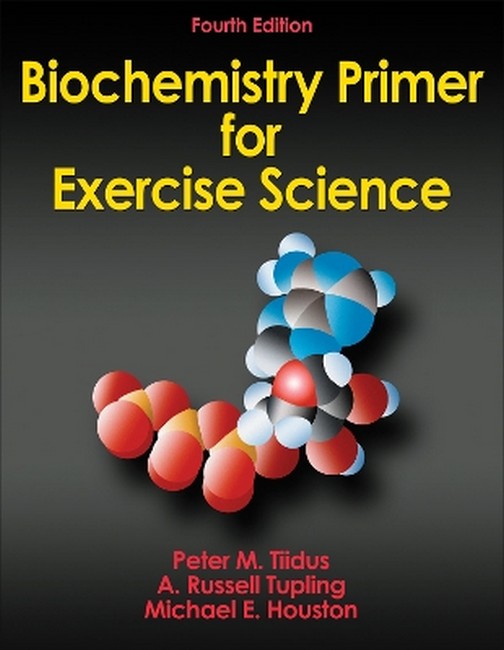Peter M. Tiidus, PhD, is a professor and former chair of the department of kinesiology and physical education at Wilfrid Laurier University in Waterloo, Ontario, Canada. For more than 30 years, he has focused his research on the physiological mechanisms of and practical interventions in muscle damage and repair, employing both animal models and human subjects. Tiidus has authored more than 80 publications and presented his research in multiple lectures and conference presentations on estrogen and muscle damage, inflammation, and repair and the influence of treatment interventions on muscle recovery from damage and physiological responses. He currently serves as an editorial board member for Medicine & Science in Sports & Exercise. He is also a former member of the board of directors of the Canadian Society for Exercise Physiology. A. Russell Tupling, PhD, is an associate professor in the department of kinesiology at the University of Waterloo in Ontario, Canada. His research program, which is funded by the Natural Sciences and Engineering Research Council of Canada and the Canadian Institutes of Health Research, is dedicated to the understanding of the regulation of sarcoplasmic reticulum (SR) function in muscle and understanding how defects in the function of SR proteins that occur with oxidative stress contribute to fatigue, weakness, and disease. In 2009, he received an Early Research Award from the Government of Ontario to conduct research examining a potential link between Ca2+ pump energetics in muscle and metabolic disorders. Tupling has 49 peer-reviewed publications in scholarly journals and over 70 conference abstracts based on his research. In 2010, he won the Award of Excellence in Graduate Supervision, which was established by the University of Waterloo in recognition of exemplary faculty members who have demonstrated excellence in graduate student supervision. Tupling is a member of the American Physiological Society and the Canadian Society for Exercise Physiology (CSEP). He was invited to give the inaugural Mike Houston Tutorial Lecture in Skeletal Muscle at the CSEP conference in 2009. Michael E. Houston, PhD, received his undergraduate training in biochemistry from the University of Toronto and his PhD in biochemistry from the University of Waterloo. A superb athlete and lifelong exercise fanatic, he was able to integrate his training in biochemistry with his love of exercise sciences and to forge a career as a teacher and scientist in the field of kinesiology. For almost 40 years during his career, he authored more than 100 refereed publications and taught courses on the biochemistry of exercise to many undergraduate and graduate students. In 2003, he was presented with the Honour Award from the Canadian Society for Exercise Physiology in acknowledgment of his lifetime contribution to research and education in exercise science. Houston was the author of the first three editions of Biochemistry Primer for Exercise Science. This fourth edition, which is built on his body of work, still incorporates a major portion of his third edition. Dr. Houston passed away in 2008.
Request Academic Copy
Please copy the ISBN for submitting review copy form
Description
Part I: Proteins and Enzymes: The Basis of Biochemistry Chapter 1: Amino Acids, Peptides, and Proteins Nature of Amino Acids Characteristics of Peptides Structure of Proteins Next Stage: Proteomics Summary Review Questions Chapter 2: Enzymes Enzymes as Catalysts Rates of Enzymatic Reactions Enzyme Cofactors Classification of Enzymes Protein Transporters Oxidations and Reductions Regulation of Enzyme Activity Measurement of Enzyme Activity Next Stage: Redox Regulation of the SERCA Pump in Vascular Physiology and Disease Summary Review Questions Chapter 3: Gene Transcription and Protein Synthesis DNA and RNA Transcription Posttranscriptional Modifications of RNA Translation Posttranslational Processing of Polypeptides Protein Degradation Regulation of Gene Expression in Exercise and Training Next Stage: MicroRNAs and the Adaptive Response to Exercise Training Summary Review Questions Part II: Metabolism: Regulation and Adaptation to Exercise and Training Chapter 4: Energy Systems and Bioenergetics Energy Requirements of Skeletal Muscle Energy-Rich Phosphates Energy Systems Bioenergetics Next Stage: Epigenetic Control of Skeletal Muscle Fiber Type and Metabolic Potential Summary Review Questions Chapter 5: Oxidative Phosphorylation Overview of Metabolism Mitochondria Citric Acid Cycle Electron Transport Chain Coupled Phosphorylation Regulation of Oxidative Phosphorylation Quantification of Redox Reactions Oxidants and Antioxidants Next Stage: Effects of Aging and Exercise Training on Muscle Mitochondria Summary Review Questions Chapter 6: Carbohydrate and Related Metabolism Carbohydrates Cellular Uptake of Glucose Phosphorylation of Glucose Glycolysis Glycogen Metabolism Lactate Metabolism Oxidation of Cytoplasmic NADH Gluconeogenesis Pentose Phosphate Pathway Signaling Pathways Next Stage: Carbohydrate, Exercise Performance, and Fatigue Summary Review Questions Chapter 7: Lipid Metabolism Types of Lipids Fat Storage and Metabolism Oxidation of Fatty Acids Oxidation of Ketone Bodies Synthesis of Fatty Acids Fat as Fuel for Exercise Metabolism During Exercise: Fat Versus Carbohydrate Adipose Tissue as an Endocrine Tissue Cholesterol Next Stage: Exercise, 24-Hour Fat Oxidation, and Weight Loss Summary Review Questions Chapter 8: Amino Acid and Protein Metabolism Overview of Amino Acid Metabolism Degradation of Amino Acids Urea Cycle Fate of Amino Acid Carbon Skeletons Amino Acid Metabolism During Exercise Additional Roles for Amino Acids Next Stage: Effects of Diet and Exercise on Protein Degradation and Synthesis Summary Review Questions
"This welcome update of the previous edition includes the most recent peer-reviewed literature that examines exercise science in conjunction with the basic sciences. The authors are well-respected scientists in the field and their expertise, in combination with the updated literature, results in a current and trusted information source for this area." --Doody's Book Review (5-star review)

